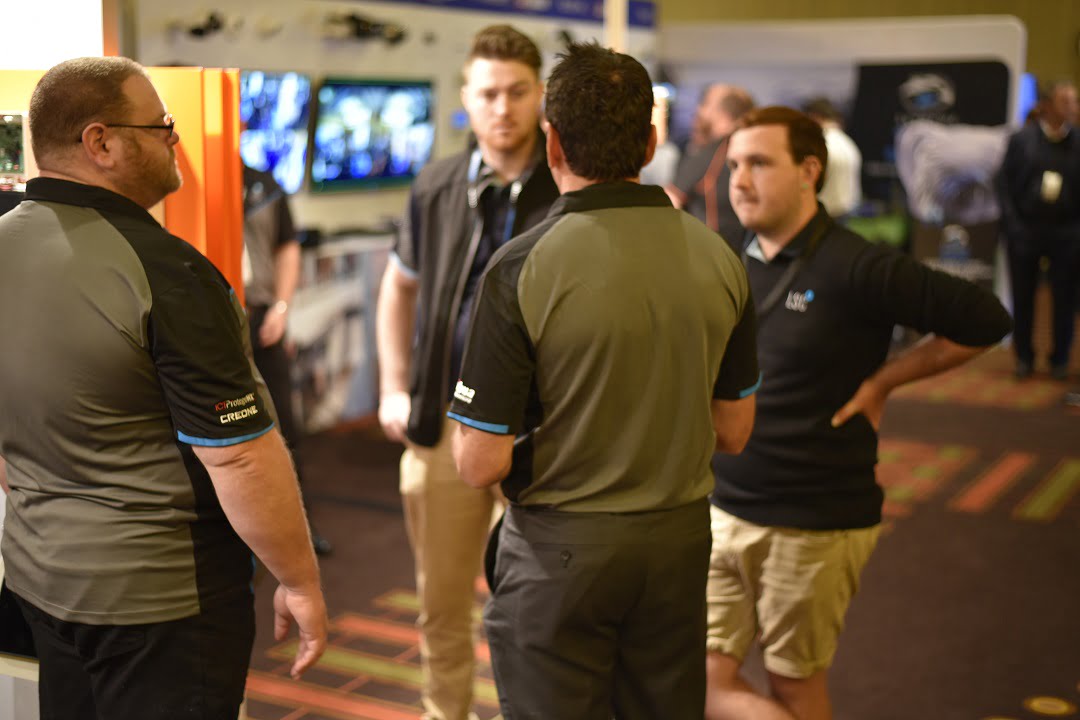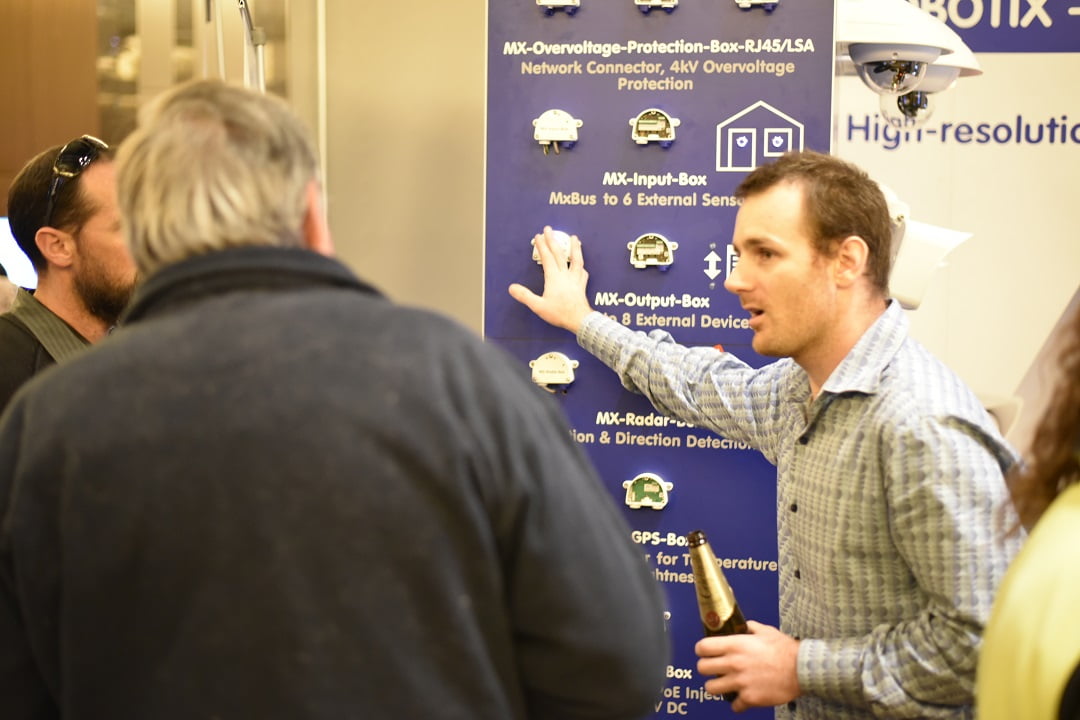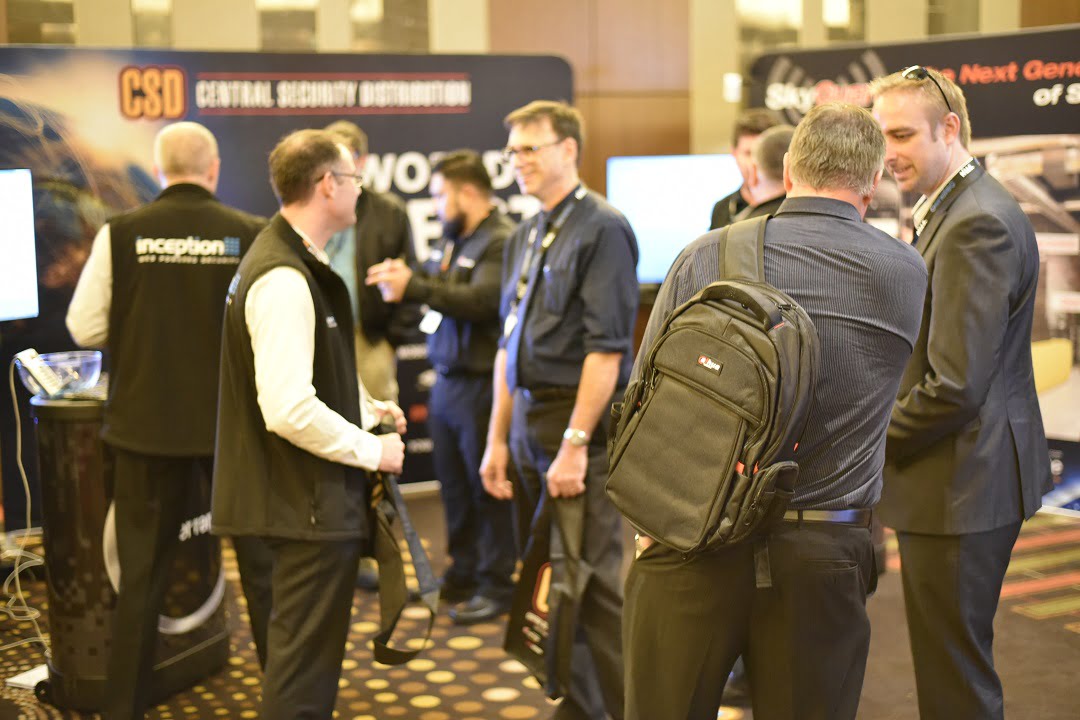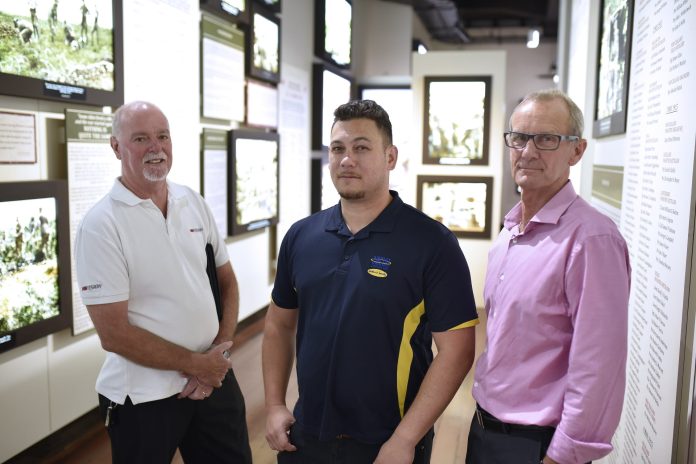Circuit Systems has installed Hikvision cameras, a Milestone VMS, and a Gallagher access control and intrusion detection solution at Pukeahu New Zealand National War Memorial Park in Wellington. The installation took place in lockstep with the creation of The Great War Exhibition, making it a fascinating and challenging application.
PUKEAHU National War Memorial Park is a precinct more than one place. The former Dominion Museum housing The Great War Exhibition and the newly opened Pukeahu National War Memorial Park, including the Australian Memorial, rotate around the spindle of the Carillion, under which lies the Hall of Memories. Recently, the whole National War Memorial precinct has undergone a $NZ10 million makeover, at the heart of which is The Great War Exhibition located in the hall of the old Dominion Museum Building.
TGWE was created by film maker Sir Peter Jackson using the resources of Wingnut Films and the Weta Workshop and was timed to open in conjunction with the Pukeahu National War Memorial Park in time for the centenary of the Gallipoli landings. It goes without saying that this looming deadline, as well as the need for creative, technical and building teams to work alongside one another, were key challenges for the security installation team.

According to The Great War Exhibition general manager, Dave Clearwater, who works for National Military Heritage Charitable Trust, the security solution at the National War Memorial has 2-pronged operational goals.
“Firstly, the system is there for security of staff and visitors during the working day, which is why we’ve got the control room upstairs to ensure that if there’s a need for action to address an elderly person’s health issue or a security issue, security staff can take action,” Clearwater explains.

“Secondly, there’s after hours protection of the overall site in case of a break-in – this relates not only to the value of items in the exhibition. Management brought defence in on security system planning given the number of weapons we have here. This input saw the application of a comprehensive mix of security systems, as well as the presence of onsite security officers.
“We have alarms and access control, as well as CCTV cameras that gather and record footage 24 x 7 allowing us to monitor events in real time on the video wall or go back and view events. Once detected, operators can use radio to call in an appropriate response. The security system has comprehensive capabilities – we were called out the other day because a break-glass sensor in the café was activated by cutlery being dropped on the floor.”


The TGWE includes models of attacks and counter attacks at Chunuk Bair in exquisite detail…
Clearwater says the catalyst for creation of The Great War Exhibition was as a national acknowledgement of New Zealand’s role and sacrifice in the Great War and represented a partnership between the Ministry of Culture and Heritage and the National Military Heritage Charitable Trust, of which Sir Peter Jackson is a board member. An important contribution to the exhibition are many items from Sir Peter’s personal collection.
“To put the project into context, The Great War Exhibition and all supporting services, were constructed in the great hall of the former Dominion Museum in just 14 weeks,” Clearwater explains. “The express time frame put everyone under extreme pressure. To keep up with the schedule, the security integration team installed part of the system without knowing what the end requirement would be, while the artists building the exhibit were not certain how the finished exhibit would look.
“It’s fair to say that the exhibition evolved in real time like a film set – suddenly the creative team would say; ‘Let’s do this, it’s going to look better’ and contractors would need to go back and work around the changes. When the exhibit opened it was as if the paint was still wet.”

Colourised photography from the Wingnut-Weta artists has three-dimensional depth of field.
Clearwater says that management contracted integrator Circuit Systems to install a particular number of cameras at the site but certain specifics of the application – such as where all the cameras would be installed – needed to be left open.
“Given the time pressures and the nature of The Great War Exhibition, management decided to install the security systems to its own timeline to ensure everything worked,” he says. “We considered that adjusting some camera views later on would be far easier than beginning the entire job of installing the security systems after the exhibition had opened.
“The impact of the creative side of the site and the tight time frame meant we weren’t able to go through the planned pre-construction process we would ordinarily have undertaken,” he explains. “This meant many contractors, including the security integrators, were working as well as they could with limited knowledge of the final design. The key to managing that successfully was to ensure the system design remained flexible.”

Hikvision PTZ and wireless link on the Carillion
According to Clearwater, putting the exhibit together logistically was challenging in the extreme. A wall needed to be removed so a modified 3-ton Dennis motor bus could be added. Then part of the roof had to be removed and the largest crane in New Zealand brought down to lower a 9-ton British Mark I tank into position. Then there was the addition of support under the floor for these and other heavy items, an addition which created an incline in the floor that impacted on other aspects of the project. Clearwater explains that the nature of the exhibition meant that internal aesthetics were crucial, and this influenced everything including the security systems.
“To avoid conflicting with the realism of the exhibition, Sir Peter Jackson wanted all security devices to be as discrete as possible,” explains Clearwater. “It’s like a series of film sets and you can’t have their continuity impacted on by visible security cameras or other sensors – this meant discretion was an important aspect of the installation that posed challenges. Security devices had to be built into the set or hidden in the darkness around the edges.
“Obviously, the system is working exceptionally well as far as we are concerned, as is the exhibition – it’s the only attraction in Wellington that rates 5 out of 5 stars on Trip Advisor and sits number 2 nationally behind Te Papa Tongarewa, which has been going 20 years.”
Walking the Site
After a quick chat about the application, the first thing we do is take a walk through the site in order to get a sense of its scale and the challenges it posed the integration team. Understanding the security solution turns out to be hard to disentangle from TGWE itself. My grandfather and great uncle fought in the Otago Infantry Brigade in WW1, while Dad flew F4U Corsairs with RNZAF 24 Squadron in the Pacific War, so visiting New Zealand’s National War Memorial was always going to be compelling.
Regardless of that personal sense of connection, The Great War Exhibition is a moving experience in its own right, contriving to provoke powerful engagement with raw material. Listening to my recordings later, there were long periods of silence during our tour. Faced with the realism of some displays, I found myself thinking of Kiwi John Lee’s forgotten personal account, Civilian into Soldier, an unflinching barrage of a book that never stops crashing out.

Like a film, The Great War Exhibition takes visitors on a temporal journey through vignettes of the great war, beginning in a cobbled street in a Belgian town in pre-war 1914. As you move forward, a military truck morphs into a civilian omnibus seconded as a troop carrier, an exact replica of a Maurice Farman ‘pusher’ biplane with death’s head prow swoops overhead, menacing a gun limber at full gallop. We pass heavy guns, muzzles pointed skyward, loaders bent to their work. Further in, a British Mark I tank launches itself from the lip of a shattered trench, under its tracks life-size German soldiers crouch, teeth bared like cornered animals.

We round a corner out of darkness to face 3 stormtroopers dehumanised by gas masks charging the corridor from the open end of a low trench. After getting over the shock I see they are heavily armed – one with a Bergmann MP18 – the world’s first combat submachine gun – another with a flame thrower and the third with a sling of potato masher concussion stielhandgranates. If all this war stuff seems a bit intense, that’s because The Great War Exhibition is intense. Through the powerful agency of its exhibits, battle scenes and near 3-dimensional colourised photography, The Great War Exhibition bursts out of the past into endless moment.

There’s a profound connection between the surveillance system and the exhibits themselves that CCTV people will recognise – light. The carefully planned lighting of The Great War Exhibition serves narrative, not identification of visitors. This makes significant areas of the exhibition the second most challenging CCTV application I’ve ever seen – the first being the lowest levels of the MONA museum in Hobart. For security team and installers, managing low light in the exhibition space is a central aspect of the surveillance solution across the entire National War Memorial and they handle it with day/night cameras and integrated IR.

Low light is not the only challenge – there are strong bright points of light from floodlight clusters. Many of the cameras in the darkened sections of the exhibition are simply impossible to photograph – it’s highly unusual for my -3EV DSLR to fail to attain automatic focus but that happens here multiple times. Then there are multiple colour temperatures in the same area, high and low ceilings, variable angles of view and lines of sight blocked by vehicles and weapons.
The System
A range of systems combine to secure the National War Memorial and to protect multiple locations across the precinct. There are cameras around the Carillion and in the Memorial Park along with a camera inside the Dominion Museum building and the throughout The Great War Exhibition itself. A remote site, the Queen Elizabeth 2 Education Centre is also connected to the control room via 1000m of fibre.
Alongside the surveillance system is a Gallagher access control solution supporting a constellation of alarm sensors – reeds, AIRs beams, glass break sensors and volumetric sensors. Managing CCTV is handled by Milestone XProtect, while alarm and access events are managed by Gallagher Command Centre, with an instance of the event log included in the video wall of the control room for real time synthesis by security staff.

There are around 40 Hikvision cameras in the video surveillance system supplied by Hikvision distributor Atlas Gentech – a mix of fixed cameras, fixed domes and PTZs – many with integrated IR. These include 19 mini PTZ DS-2DE4220 cameras, 4 DS-2DE4332FWD-IZ 3MP IR 120dB WDR domes and a DS-1100KI joystick controller. Mounted on the Carillion to allow surveillance of the front entrance of The Great War Exhibition in the Dominion Museum Building is a powerful 36x Hikvision PTZ. The CCTV system also includes Hikvision NVRs in a number of remote locations. All the cameras no matter where they are on the site can be managed by the Milestone XProtect Corporate VMS.

The network inside the exhibition building is Cat-6 and remote locations come in via wireless links or on fibre runs. The cabling was pulled in by a mix of contractors and security technicians. In terms of mounting points, cameras are positioned as discretely as possible, many hand-painted by the installation team to blend in with the background of the exhibition.
The Installation
From the point of view of the security installation team, New Zealand National War Memorial was challenging and rewarding. According to Circuit Systems technician Isaac Monk-Taingahue, the central challenge of the installation was time – The Great War Exhibition, which forms the heart of the installation, was built very quickly and with no set plan – the installation process was a shifting target thanks to the simultaneous creative process.
“The artists had a general layout but had not decided exactly how the exhibition would fit together,” Monk-Taingahue explains. “This meant some cameras needed to be moved a number of times – in one case 4 times – to meet changes made to an exhibit.

“You would install a camera, start working around the corner and come back and there would be a wall obscuring the camera view. You’d say to an artist ‘how is this area going to look’, and they’d say, ‘come back in an hour and see – I don’t know either’. At one point we installed a camera on a wall, went to lunch and when we came back the creative team needed to place a window where our camera was installed.
“To manage the potential for change, we would run a cable into an area where it would allow us to install cameras here, there and there – that gave us the flexibility we needed to meet the moving target. In some places when the artists finished working we’d say, ‘can we put a camera in here?’ and they would say yes or no. So there were parts of the system that were set but other parts could not be.
“Because of the time constraints, there were multiple trades on site at once – all trying to meet their own deadlines and work around the creative business of constructing an exhibit which like a film set, kept evolving in real time.”

According to Monk-Taingahue, there were 5 security installers on the job typically, often working from 7.30am to 11.30pm sometimes 16 or 18 hours a day as the deadline got closer.
“We worked early mornings, late nights, over Easter – we worked whenever we could to meet that tight schedule and all the other trades and all the artists were doing exactly the same thing.”

Making the work somewhat easier was the fact the Dominion Museum building was a greenfield site from the point of view of security electronics – Massey University occupied the site prior to the construction of TGWE in the great hall, so there was no need to install adjacent security systems and cut over, or to wrestle with the merger of sprawling access control databases.
“In terms of the application of cameras, we used cameras with varifocal lenses and focused first on placing cameras where it was decided they could be, then we adjusted the angles of view,” Monk-Taingahue says. “Because depths of field are quite small, the angles of view are at wider default settings in most cases.

“We brought the cable to the camera points any way we could – sometimes there was a cavity behind a false wall, other times we needed to surface mount. In some cases, we were able to install cameras by dropping cable down from the exposed cable tray – these were the easier cameras in install. In terms of placement, there are entrance cameras that get face recognition at the entry, though the spaces are small enough in size that most the cameras will get face recognition wherever there’s sufficient light and recognisable characteristics in darker sections.

“The hardest camera was above the bakery at the start of the exhibition – it was moved so many times,” he explains. “Other cameras had aspects that were easy and challenging – they had conduit near them for easy connection, but the connection had to made through a box section. Ceiling heights were an issue for all the contractors and there were limited locations for scaffolding.”

According to Monk-Taingahue, the access control and intrusion detection system was going in at the same time as the CCTV. This supports prox readers for secure doors, as well as reed switches, sensors and AIRs beams for intrusion detection. There’s low level integration between sub systems – for instance, the access control system is integrated with the PA system but there’s no connection between CCTV and access control.
“While the short time frame posed challenges in some ways, it also made for a great working environment because all the contractors and the artists just had to get along,” Monk-Taingahue says. “Given the nature of the site, there was a sense of creating something bigger than ourselves. This site means something to New Zealanders and to Aussies as well – it wasn’t a shopping centre or anything like that. We were also working alongside multiple trades and artists, which was different.”

“With the short time-frame it could have gone 2 ways, with everybody stressed and working against each other but that did not happen – everyone realised this is a special place, an important place and not just another job. Given the time frame the effort was unreal – it came at us thick and fast, but it was a special installation – there was a good culture here and artists and contractors worked well together.”
The Control Room
The heart of the security solution at the National War Memorial is the control room tucked away on the second floor and manned by contracted security staff from Simply Security. As soon as you look at the video wall you can see the challenges of the application, as well as its unquestionable power. Dark holes in the exhibition area are lit up by infrared and image quality shows good contrast and sharpness, as well as excellent management of bright points of light. Blooming is very well controlled.
After we look at the IR supported cameras, security officer Mike Hills starts off steering the big wireless-linked PTZ on the Carillion around to the mouth of the Victoria Tunnel on a distant hillside – as he does so it’s almost possible to read number plates. As well as the ability to get longer views, this camera’s primary role is the ability to shift between offering situational awareness and high-quality face recognition at the entrance to The Great War Exhibition. The PTZ capability also means the camera can be moved to focus on areas of interest during events or busy times.
 Mike Hills at the controls…
Mike Hills at the controls…
“Our security operator has the ability to view all necessary areas of the site – the cameras you can see on the video wall here are around the Carillion and these one here are from the Queen Elizabeth 2 Education Centre 1000m away – the security team here monitor that building as well,” explains Clearwater. “As an example of the system’s capability, the PTZ on the Carillion is magnificent – I love the control operators have over it, the capability to look deep into scenes like the entrance to Victoria Tunnel.”
Clearwater says it was a quick process for the security team to get a handle on the management system.
“Security staff are working with products they were familiar with and had identified those solutions that were fit for purpose in advance, so everything works exceptionally well,” he explains. “Incidentally, the security team is empowered to research CCTV products they believe will enhance the solution we have here. It’s also fair to say the Wingnut Films team had input into what they thought would work best for us.”

In keeping with the nature of The Great War Exhibition experience, a future development of the site to be completed by August 2018 will include a Trench Exhibit with 60 metres of trenches designed to mirror Quinn’s Post at Chunuk Bair above the Gallipoli beach-head. This development, to be completed by April 2018, will include tunnels, with CCTV cameras located above the trenches as well as inside the tunnels. All these new cameras will be monitored here in the control room.
Operator Mike Hills is quick to heap praise on the performance of the system he’s driving.
“I’ve worked at other major sites around New Zealand – including some large and complex sites – and they have Frankenstein electronic security systems that have been added onto over many years with no operational consistency,” he says. “Comparatively, this solution at the National War Memorial is like a Lamborghini from an operator’s point of view. It has incredible control – everything is in tune and works together. You don’t have to do any kind of logical bridging of gaps, it’s simply complete.

“During the setup and commissioning of the system, I set out the layout of the cameras on the video wall and it’s just left to right, left to right, so you can’t get it wrong. Everything that flashes up is right in front of your eyes. Importantly, I also have a Gallagher event log on a monitor in the video wall – this allows me to view video of access or alarm events as they occur.”
Hills says that when you get used to a multi-monitor video wall like this, getting an overview of key camera views across the site becomes an unconscious exercise.
“It’s like driving your car home then wondering how you got there,” he says. “If I sub-consciously notice anyone stepping into an area they should not be – for instance those cameras on second screen down, first column – I will be straight onto it almost before I’m aware something is wrong. And in terms of response, we can have a security officer anywhere in the building in not much more than a minute.

“With this system we don’t miss much. We can see any medical emergencies, and nobody can break in without detection. There are reed switches, glass breaks, vibration alarms, beams. The way the system is laid out makes working long shifts much easier. If this was one of the other systems I’ve used, you would be having to work very hard to make the system function as it should but not with this. I like this.”
I point out the performance of cameras running in monochrome with IR in the dark parts of the exhibit – it’s pretty solid, isn’t it? There’s nice contrast for faces and fine details – you must be pleased with that?
“Yes, we do get good faces in low light and the cameras are capable of even better performance,” says Hills. “In order to make the whole thing work smoothly with the hardware we’ve got, resolution is backed off a wee bit to retain real time. In most places on the site angles of view are tight and the depth of field comparatively shallow in the internal spaces, so there’s no appreciable loss of image quality and we have everyone moving in real time.”
Conclusion
Clearwater says the security solution at New Zealand War Memorial is absolutely fit for purpose – it ensures the security of all the exhibits and weapons 24 x 7, as well as ensuring the security and safety of staff and visitors during operating hours.
“The system Circuit Systems built for us serves our purpose very well,” he says. “Part of our imperative is that we are run by a trust as a business, so we try to maximise return on investment. To that end, this system is designed to stand alone when there are no operators in the control room. As a result, it needed to perform well at all times and in all conditions.”

“This was a difficult application – the challenges were continual change through a plan that contained the expectation of evolution. There were many long hours spent putting The Great War Exhibition and its supporting systems together – the various teams worked through the night at times but what we have created here, everyone is exceptionally proud of.
“Operationally, there’s the capability for an operator to be provided high resolution footage and see exactly what they are looking for – being IP-based the system is future-proof, a quality we have taken advantage of already across our 3 connected sites. Overall, I would say this system meets all our needs currently and will continue to do so into the future.”
By John Adams
Fact File
* Hikvision PTZ, mini PTZ, dome and IR dome cameras
* Hikvision NVRs is remote locations
* Milestone XProtect Corporate VMS
* Gallagher access control and intrusion detection system
* Gallagher Command Centre software
* Multiple reed, glassbreak, AIRs, volumetric sensors.
#securityelectronicsandnetworks #TheGreatWarExhibition #security #cctv
Click here for Peter Jackson’s They Shall Not Grow Old movie trailer…








